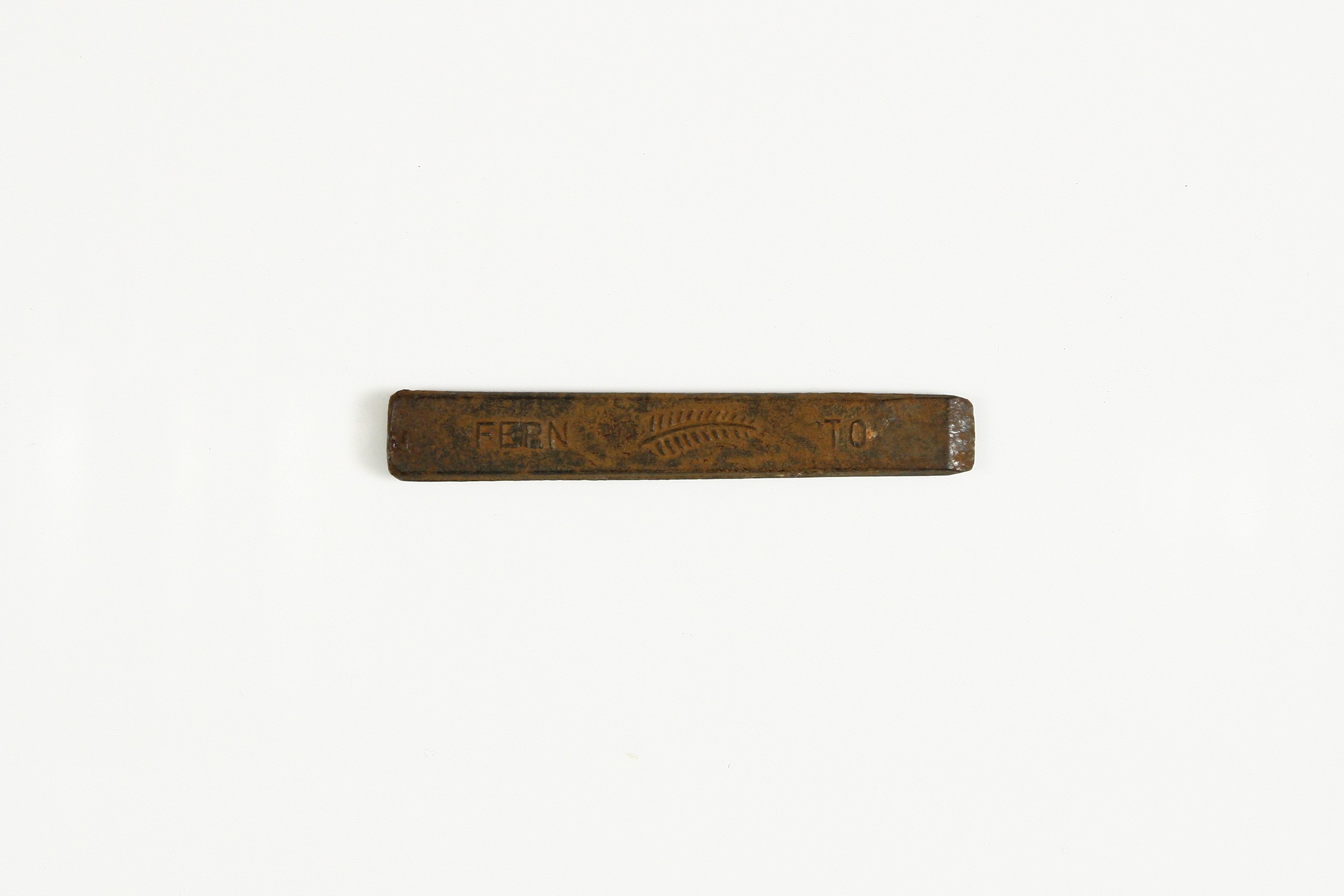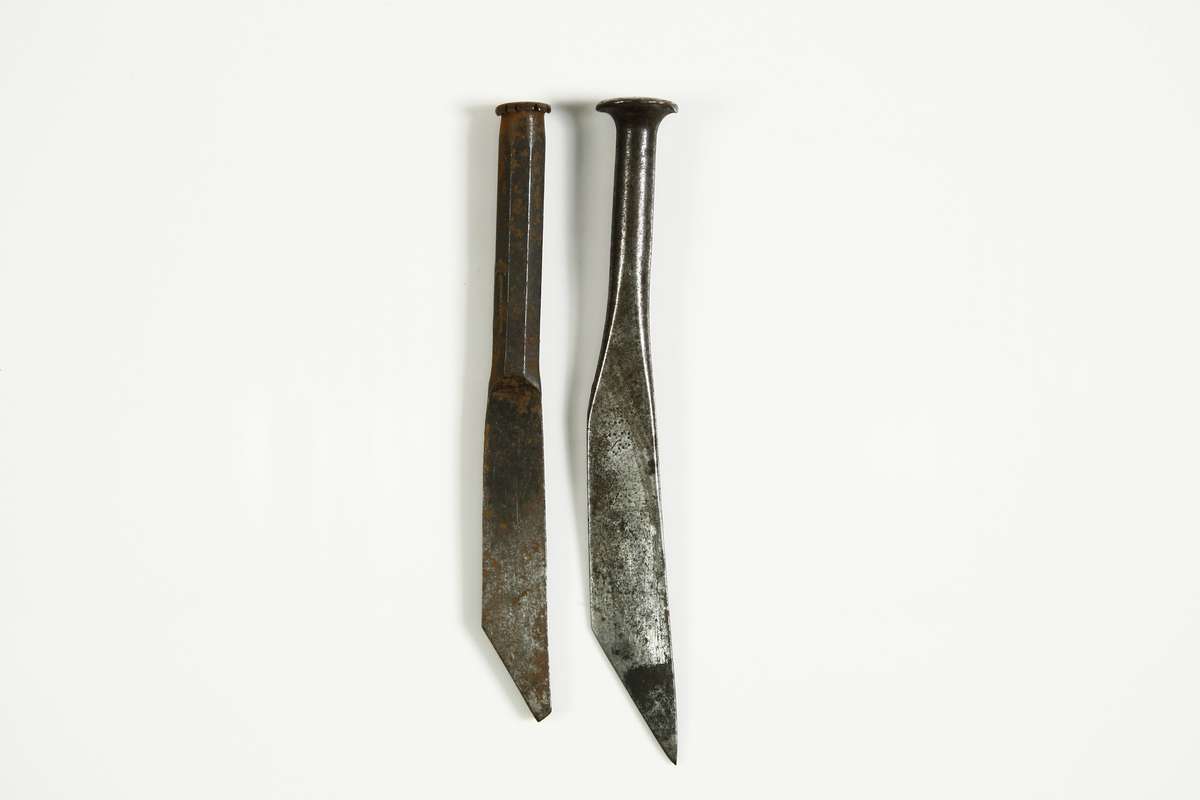
Greetings my name is Candice Witton and I am working with Roxi Truesdale as an Intern in the Registration department at the Australian National Maritime Museum. Roxi and I have been accessioning the Higham shipwright tool collection into the museum database. I will be profiling some of the fascinating tools we have uncovered.
Of the 180 or so objects in the Higham collection we have had great success (so far) identifying the many (at first) boggling variations of tools. We have had some amazing reference material from the Vaughan Evans Library which we are so grateful for. Without this, we may have been left referring to the many different varieties of caulking irons as ‘chisels’ and helical auger drill bits as ‘spiral drills with screws on top’. Thankfully we have now been exposed to the fascinating world of shipwrighting, and the process of caulking.
Caulking is simply the method of sealing joints or seams. Caulking irons are used in a similar manner to chisels, hammering a fibrous material into the joints between wooden planks. This is done to make the vessel watertight and leak free.

Sharp caulking irons
Here we have two caulking irons from the Higham collection. On the left is a significantly older model than the relatively newer iron on the right. Traditional caulking on wooden vessels uses fibres of cotton and oakum – usually a material such as hemp fibre soaked in pine tar. These specific irons are known as sharp or butt irons, and they are used for forcing the caulk into narrow areas.

Reefing irons
Here are two reefing or clearing irons from the Higham collection. The left iron is an older model than the one on the right. Reefing irons were used to scrape out old oakum, to clean the seams to make way for new caulking.

- Helical auger drill bit
The Higham tool collection contains many variants on auger drill bits. Here is a standard bit, which features a rotating helical blade and a screw to pull it into the wood. This bit is to be used in a hand-brace, and is effective at moving wooden material out of the hole being drilled.

One object in the Higham tool kit remains a bit of a mystery. This object seems quite unusual, and after consultation with tool experts we were left stumped. It is most possibly a variation on a cold chisel, and after doing extensive online research this is what it most closely resembles. Regardless how I phrased my searches, I still returned numerous references to Jimmy Barnes!

What is also curious are the manufacturers logos “Plumb (Aust) PT” on one side, “Fern Tools” with fern frond on the other. I discovered W H Plumb Australia is of axe making fame, but beyond that we haven’t had a lot of luck!
So there you have a small sample of some of the many, many interesting tools of the Higham tool collection. You can read Roxi’s awesome blog detailing our first contact with the tool collection, and curator Stephen Gapp’s fascinating blog on the origins of the collection. Stay tuned for more intern blogs as we explore the time and place that these tools were used.
Candice
Registration Intern
